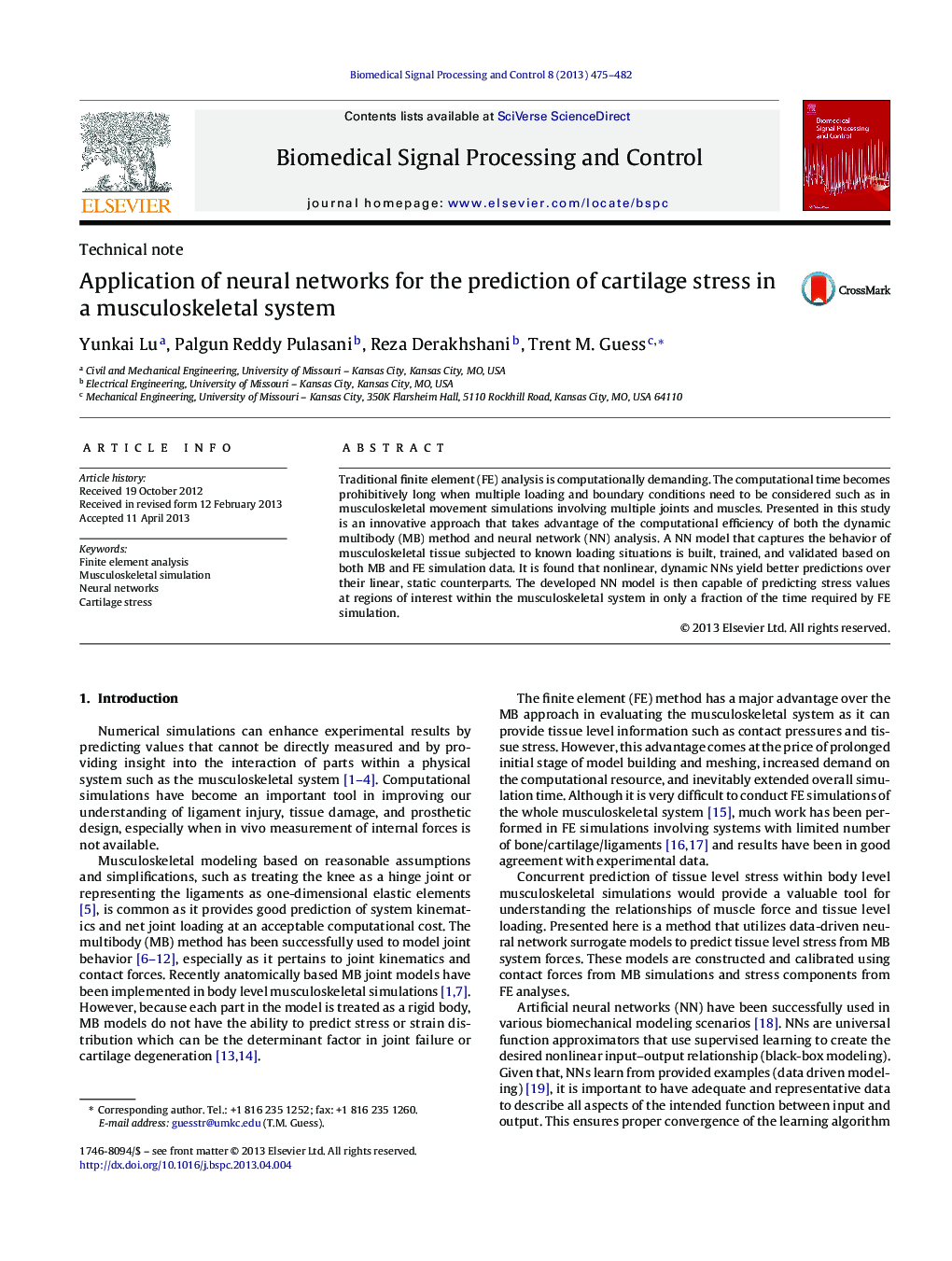| Article ID | Journal | Published Year | Pages | File Type |
|---|---|---|---|---|
| 10368408 | Biomedical Signal Processing and Control | 2013 | 8 Pages |
Abstract
Traditional finite element (FE) analysis is computationally demanding. The computational time becomes prohibitively long when multiple loading and boundary conditions need to be considered such as in musculoskeletal movement simulations involving multiple joints and muscles. Presented in this study is an innovative approach that takes advantage of the computational efficiency of both the dynamic multibody (MB) method and neural network (NN) analysis. A NN model that captures the behavior of musculoskeletal tissue subjected to known loading situations is built, trained, and validated based on both MB and FE simulation data. It is found that nonlinear, dynamic NNs yield better predictions over their linear, static counterparts. The developed NN model is then capable of predicting stress values at regions of interest within the musculoskeletal system in only a fraction of the time required by FE simulation.
Related Topics
Physical Sciences and Engineering
Computer Science
Signal Processing
Authors
Yunkai Lu, Palgun Reddy Pulasani, Reza Derakhshani, Trent M. Guess,
